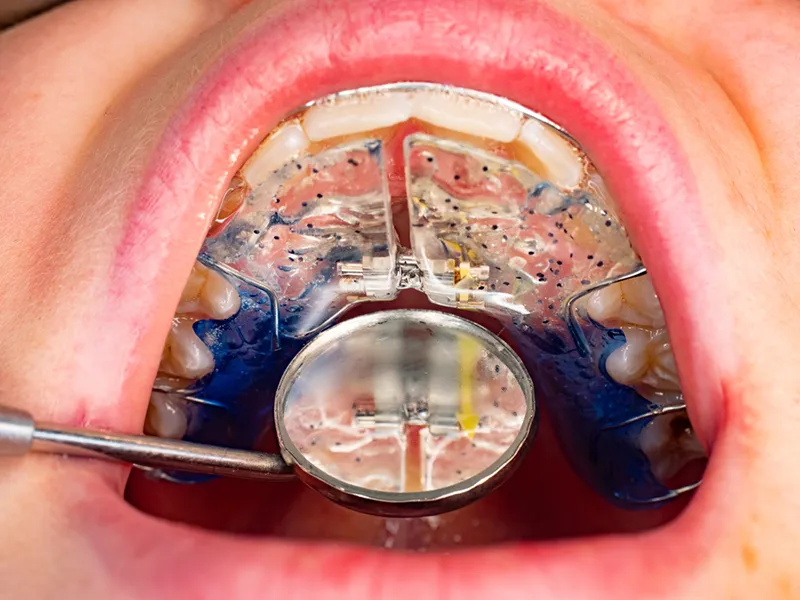
What is a Rapid Palatal Expander?
A rapid palatal expander (RPE) is a specialized device that helps to widen the upper jaw, also known as the palate or maxilla. The device works by gently separating the two halves of the palate, which are connected by a suture at the roof of the mouth. The expander is attached to the upper back teeth and gradually applies pressure to the suture, causing the palate to widen. As the jaw expands, new bone forms in the gap between the two halves of the palate.
When is an expander necessary?
A palatal expander offers several benefits. It can widen the upper arch, improving the alignment of the upper teeth with the lower teeth, which enhances the bite. Additionally, expanding the palate can provide space for crowded teeth to fit properly, potentially avoiding the need to extract permanent teeth. A narrow palate or high arch can also restrict airflow, making breathing more difficult. Studies show that expanders can help widen the nasal passages, improving breathing efficiency. Lastly, using an expander contributes to a fuller, more attractive smile. This process is most effective when done during a child or young teen’s growth phase, as it ensures a more stable and lasting result.



